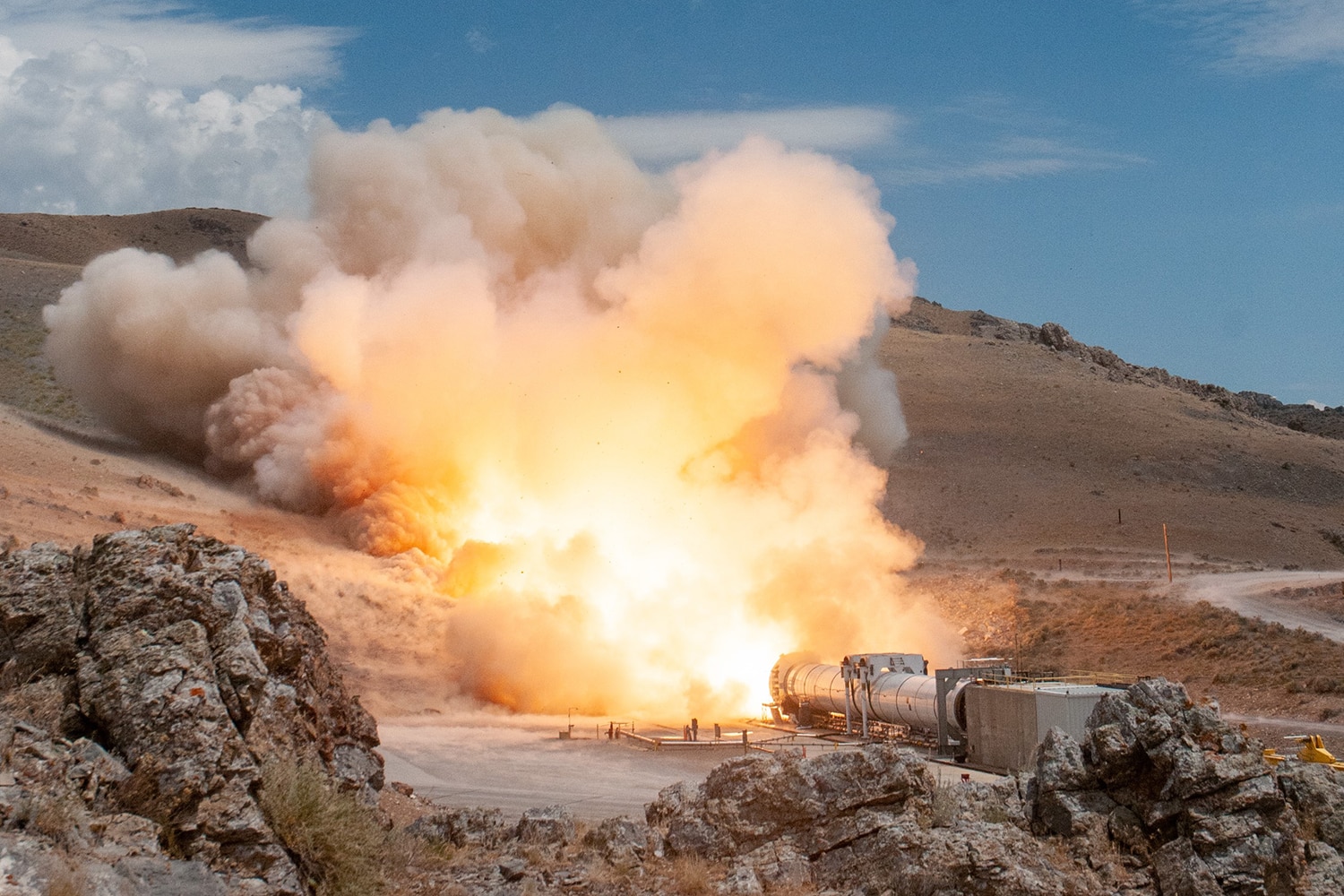
Northrop Grumman and NASA successfully conducted a full-scale static fire test of the giant solid-fueled Flight Support Booster-2 that will power NASA’s Space Launch System (SLS) rocket into space. The five-segment solid rocket booster is the world’s largest solid rocket motor and will provide more than 75% of the SLS rocket’s initial thrust during launch.
The SLS uses two five-segment solid rocket boosters to help launch NASA’s Artemis missions to the Moon. Booster segments for Artemis II, the first crewed Artemis mission, and Artemis III, the mission that will land the first woman and first person of color on the lunar surface, are complete.
The Flight Support Booster-2 is 154-foot-long and composed of leftover booster segments originally built for NASA’s Apollo and Space Shuttle Programs. Designed with an additional segment and upgraded technology and materials, each of the twin solid rocket boosters generates 25% more thrust than its predecessor boosters to aid the SLS rocket’s ability to deliver greater mass and volume to space with greater departure energy than any existing launch vehicle.
At Northrop Grumman’s Promontory, Utah, test area, the rocket booster was fired for just over two-minute, producing upwards of 3.6 million pounds of thrust. The test demonstrated a new motor ignition system and an electronic thrust vector control system that steers the motors to gather data from 300 channels that will be used for next-generation Booster Obsolescence and Life Extension (BOLE) boosters. Northrop Grumman was awarded a contract to develop the BOLE booster in December 2021.
The booster test was also designed to help engineers evaluate new materials, processes, and improvements for upgraded solid rocket boosters that will power future versions of NASA’s SLS heavy-lift rocket. Artemis IV segments are currently being cast with propellant, and the first BOLE booster composite segment case to be used for development testing completed winding in October, with the first test firing scheduled in 2024.
“Continuous product improvements and obsolescence mitigation help NASA achieve its long-term mission to utilize SLS for its Artemis program,” said Wendy Williams, vice president, propulsion systems, Northrop Grumman. “This opportunity for early learning on next-generation systems will help us develop an enhanced booster that is ready to support the greater payload demands of the SLS rocket through 2031.”
Along with the twin solid rocket boosters, Northrop Grumman also produces the abort motor and attitude control motor for NASA’s Orion spacecraft’s Launch Abort System that increases astronaut safety on a pad and during ascent. The company further supports the Artemis program by providing the Habitation and Logistics Outpost module for NASA’s lunar Gateway and internally developing a Lunar Terrain Vehicle that supports the human and robotic exploration of the Moon and beyond.
Space Launch System’s solid rocket booster test-fired in Utah
Source: Tambay News

0 Comments